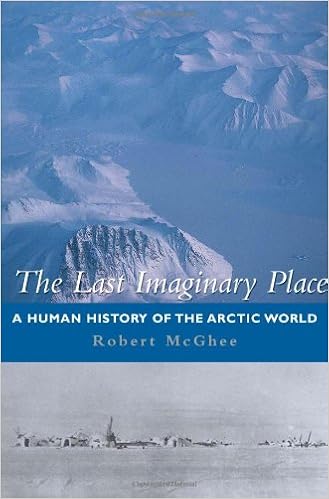
Contributors
. Jordanna Bailkin, Roger Benjamin, Daniela Bleichmar, Zeynep Çelik, David Ciarlo, Natasha Eaton, Simon Gikandi, Serge Gruzinski, James L. Hevia, Martin Jay, Brian Larkin, Olu Oguibe, Ricardo Padrón, Christopher Pinney, Sumathi Ramaswamy, Benjamin Schmidt, Terry Smith, Robert Stam, Eric A. Stein, Nicholas Thomas, Krista A. Thompson
Read Online or Download Empires of Vision: A Reader (Objects/Histories) PDF
Best Anthropology books
The World Until Yesterday: What Can We Learn from Traditional Societies?
The bestselling writer of cave in and weapons, Germs and metal surveys the historical past of human societies to respond to the query: What do we research from conventional societies which may make the area a greater position for we all? so much folks take with no consideration the good points of our glossy society, from air commute and telecommunications to literacy and weight problems.
War Before Civilization: The Myth of the Peaceful Savage
The parable of the peace-loving "noble savage" is chronic and pernicious. certainly, for the final fifty years, most well-liked and scholarly works have agreed that prehistoric struggle was once infrequent, innocuous, unimportant, and, like smallpox, a ailment of civilized societies by myself. Prehistoric conflict, in response to this view, was once little greater than a ritualized video game, the place casualties have been constrained and the results of aggression quite gentle.
The Origin and Evolution of Cultures (Evolution and Cognition)
Oxford offers, in a single handy and coherently equipped quantity, 20 influential yet beforehand really inaccessible articles that shape the spine of Boyd and Richerson's path-breaking paintings on evolution and tradition. Their interdisciplinary examine is predicated on notions. First, that tradition is important for knowing human habit; not like different organisms, socially transmitted ideals, attitudes, and values seriously effect our habit.
The Last Imaginary Place: A Human History of the Arctic World
Sea ice and the dead night solar, flaming aurora and unending wintry weather night--the arctic of traveler's stories and romantic novels is the inconceivable dream of an unlimited and desolate world--the final imaginary position on the earth. Now, during this attention-grabbing quantity, well known archeologist Robert McGhee lifts the veil to bare the genuine Arctic.
Additional info for Empires of Vision: A Reader (Objects/Histories)
Standage, A guide of the Chemical and creative characteristics of Water-Colour Pigments (London: Reeves and Sons, 1891); N. S. Baer, A. E. Joel, R. L. Feller, and N. Indictor, “Indian Yellow,” in Artists’ Pigments: A instruction manual in their heritage and features, ed. Robert Feller (Cambridge: Cambridge college Press, 1986), 1:17–36. forty Eibner (“Indian Yellow and Its Substitutes”) argued that “refined” Indian yellow had no smell, even if he additionally famous that the smell served as a competent signal of the real natural pigment (versus the synthetic). the aggregate, he stated, was once “freed” from its smell whilst it used to be processed into an artist’s colour. forty-one Baer et al. , “Indian Yellow,” 1:25. forty two Blair B. King, The Blue Mutiny: The Indigo Disturbances in Bengal, 1859–1862 (Philadelphia: college of Pennsylvania Press, 1966). forty three Banerjei, Monograph on Dyes and Dyeing, 19. forty four Watt, Dictionary of the commercial items of India, 6 (part 1):132. forty five Mukharji, “Piuri, or Indian Yellow,” 16–17. forty six Rutherford J. Gettens and George L. Stout, portray fabrics: a quick Encyclopedia (New York: D. Van Nostrand, 1942), 119; Noel Heaton, Outlines of Paint expertise (London: Charles Griffin, 1947), 137. forty seven Baer et al. , “Indian Yellow”; Ball, brilliant Earth. forty eight at the politics of colonial records (and their absences in particular), see Nicholas Dirks, “Colonial Histories and local Informants: Biography of an Archive,” in Orientalism and the Postcolonial concern: views on South Asia, ed. Carol Breckenridge and Peter van der Veer (Philadelphia: college of Pennsylvania Press, 1993), 279–313; Nicholas Dirks, “The Crimes of Colonialism: Anthropology and the Textualization of India,” in Colonial matters: Essays within the sensible historical past of Anthropology, ed. Peter Pels and Oscar Salemink (Ann Arbor: collage of Michigan Press, 1999), 153–79; Saloni Mathur, “History and Anthropology in South Asia: Rethinking the Archive,” Annual assessment of Anthropology 29 (2000): 89–106; Antoinette Burton, residing 108 Jordanna Bailkin in the Archive: girls Writing residence, domestic, and historical past in overdue Colonial India (Oxford: Oxford college Press, 2003). forty nine D. F. Cary, color blending and Paint paintings (London, 1925); A. P. Laurie, The Painter’s equipment and fabrics (London: Seely, 1926); Max Doerner, The fabrics of the Artist (London: G. G. Harrap, 1935). 50 Doerner, fabrics of the Artist. fifty one Brian Harrison, “Animals and the nation in Nineteenth-Century England,” English ancient overview 88 (1973): 786–820; Coral Lansbury, This previous Brown puppy: ladies, employees and Vivisection in Edwardian England (Madison: collage of Wisconsin Press, 1985); Harriet Ritvo, The Animal property: The English and different Creatures within the Victorian Age (Cambridge, MA: Harvard college Press, 1987); Dan Weinbren, “Against All Cruelty: The Humanitarian League, 1891– 1919,” historical past Workshop magazine 38 (1994): 86–105; Hilda Kean, “‘The gentle Cool males of Science’: The Feminist and Socialist reaction to Vivisection,” background Workshop magazine forty (1995): 16–38.



